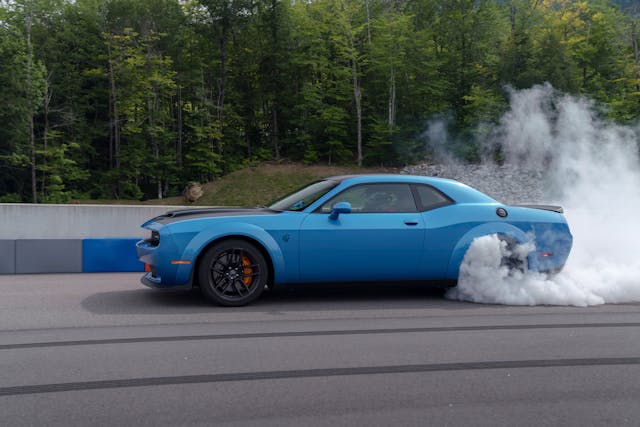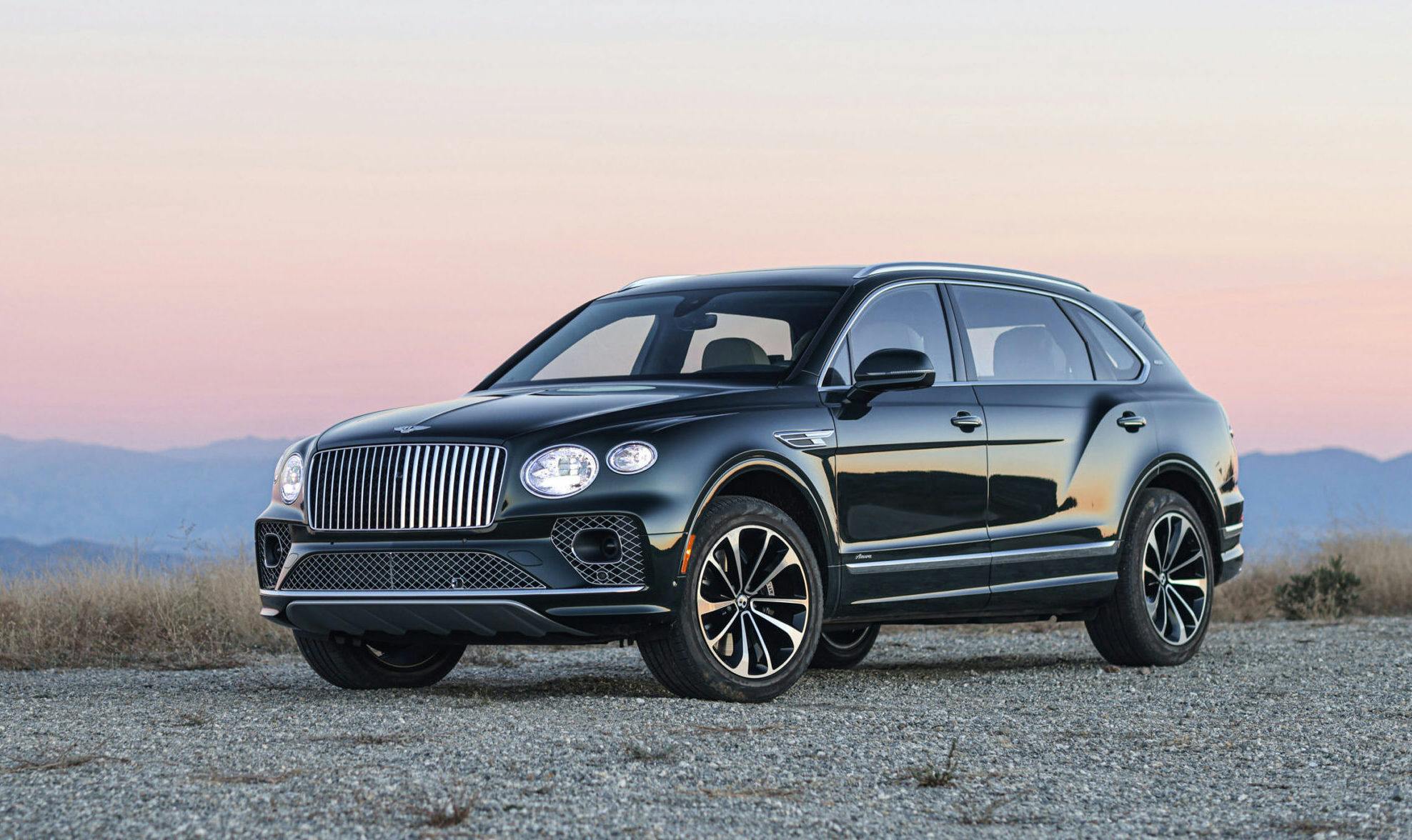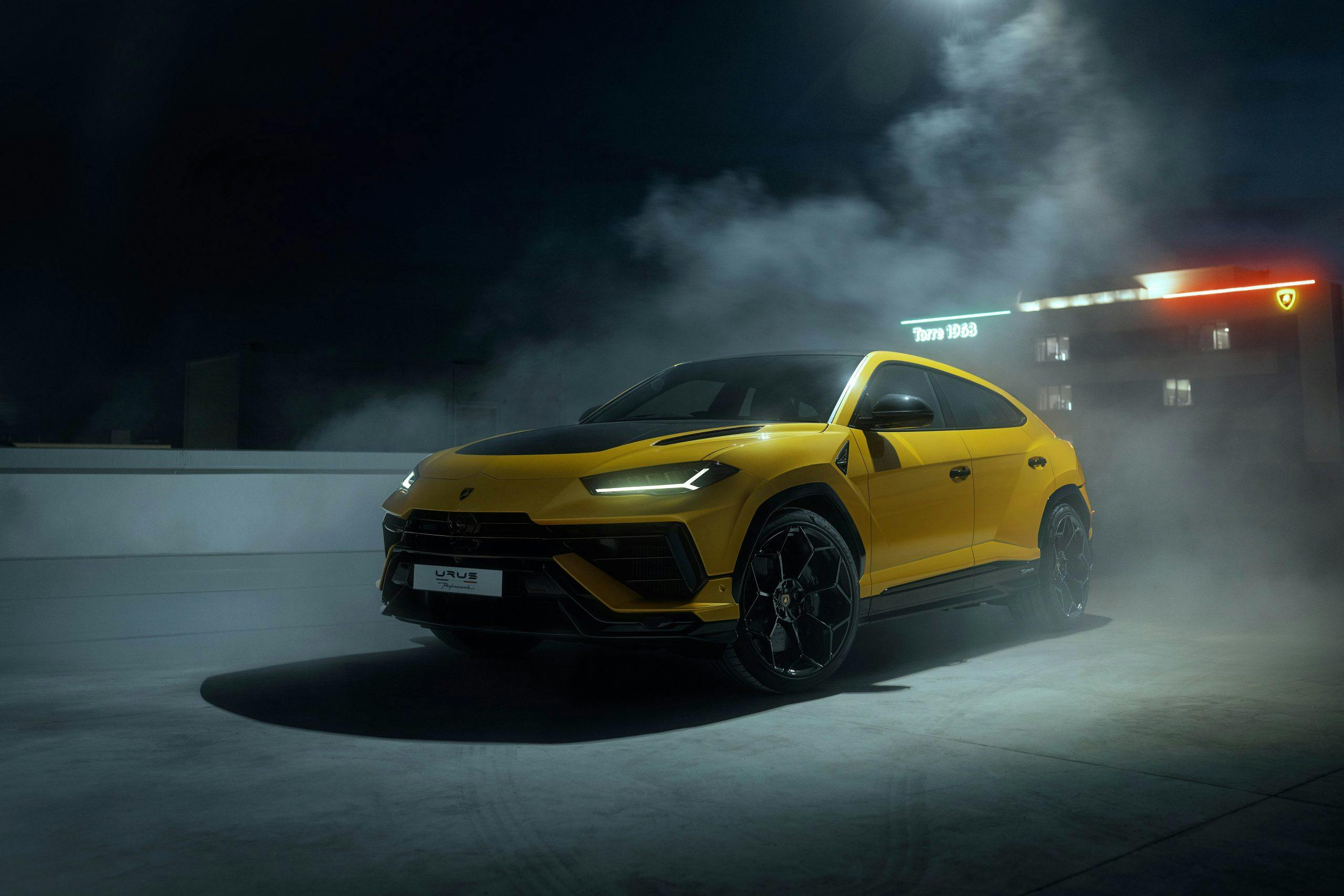Integra Type S gets 320 hp, damaged battery packs can total EV, chip shortage winding down
2024 Acura Integra Type S will have 320 hp, 310 lb-ft of torque
Intake: Acura has revealed power figures for the 2024 Integra Type S. The sportier version of Acura’s smallest car will boast 320 hp and 310 lb-ft of torque from its 2.0-liter turbocharged inline-four engine, which will pair exclusively with a six-speed manual transmission. The YouTube teaser accompanying the announcement shows a new exhaust system with three centrally mounted tips, akin to the Honda Civic Type R. The Integra Type S manages 5 more hp over the CTR, but the brief glimpse of the rear end of the car indicates that this one won’t get a bonkers rear wing as you get on the Honda. Acura will debut the Integra Type S next month at the Acura Grand Prix of Long Beach on April 14–16.
Exhaust: Note the pops and burbles from the exhaust in the teaser posted below; we hope that overrun noise makes it to production to give the Type S even more character. Our test of the regular Integra A-Spec Advanced revealed a car that hewed more towards a luxury Honda Civic Si than it did the high-revving, fiery Integra we all remembered. Perhaps the Type S will evoke more of the feelings of the Integras of yore. — Nathan Petroelje
Cost of damaged battery packs can write off the whole car

Intake: For many electric vehicles, there is no way to repair even slightly damaged battery packs after accidents, “forcing insurance companies to write off cars with few miles, leading to higher premiums and undercutting gains from going electric,” says Reuters. “We’re buying electric cars for sustainability reasons,” said Matthew Avery, research director at automotive risk intelligence company Thatcham Research. “But an EV isn’t very sustainable if you’ve got to throw the battery away after a minor collision.” Battery packs can cost tens of thousands of dollars and represent up to 50 percent of an EV’s price tag, often making it uneconomical to replace them.
Exhaust: Reuters says that some automakers like Ford and General Motors claim they have made battery packs easier to repair, but “Tesla has taken the opposite tack with its Texas-built Model Y, whose new structural battery pack has been described by experts as having ‘zero repairability.'” Tesla declined to comment. It’s definitely something to discuss with your insurance agent before you go electric. – Steven Cole Smith
SUV sales spur near-billion-dollar profits for Bentley and Lamborghini
Intake Bentley’s profits in 2022 rose €319 million ($341M) over its 2021 tally for a total of €708 million ($757M). Bentley turned over €3.38 billion ($3.61B), increased its sales by four percent, and delivered more than 15,000 cars. Meanwhile, in Italy, Lamborghini also had a record year, turning over €2.8 billion ($2.99B), which represents a 22 percent increase over 2021, and more than double the firm’s profit figure from just five years ago. The company delivered more than 9,000 cars for the first time in its history, with the U.S. remaining its biggest market.
Exhaust: It’s no surprise that the core sales for these two legendary names are no longer sports cars. For Bentley, the Bentayga SUV made up 42 percent of global sales while at Lamborghini the Urus took 60 percent — Nik Berg
We know all about Dodge’s Last Call vehicle…

Intake: …but we can’t tell you the details until 9 p.m. ET tonight, because it’s under an embargo. Suffice it to say that if you’ve followed all the Dodge Last Call teaser videos featuring an angry, unnaturally buff leprechaun, you likely have some idea of what’s coming at the announcement in Las Vegas tonight. Come back at 9 p.m. sharp and read all about it here. A tip of the hat to Dodge for making this reveal fun and exciting.
Exhaust: We can say this much: Dodge fans won’t be disappointed. Meanwhile, here’s a link to the final teaser, called Trip Wire. – SCS
Chip shortage production woes are winding down

Intake: Automakers cut just 2,400 vehicles from their production schedules worldwide last week due to chip shortages, one of the lowest weekly totals in months, according to the latest estimate by AutoForecast Solutions, says Automotive News. All of the new reductions occurred at European factories, with plants around the rest of the world getting a reprieve from the supply problems that have “ravaged factory and supply chain planning since early 2021.” Automakers are still coping with other supply chain problems, but they are less frequently blaming them on the semiconductor shortage, said Sam Fiorani, vice president of global vehicle forecasting at AutoForecast Solutions. “More than two years into this problem, it reflects poorly on a manufacturer or supplier who has not secured sourcing of chips,” Fiorani wrote in an email.
Exhaust: Automotive News says that about 714,600 vehicles have been cut from global production plans this year due to chip shortages. This latest report means dealers’ lots should be filling back up, and special orders shouldn’t take as many months to build. Good news for everyone. — SCS
Sebring endurance races prove new GTP cars’ durability and speed

Intake: There were two major sports car races at the incredibly rough and challenging Sebring International Raceway last weekend: the 1000 Miles of Sebring for the World Endurance Championship, the series’ lone visit to the U.S., and the Mobil 1 Twelve Hours of Sebring for the IMSA WeatherTech SportsCar Championship, its second outing since the relatively smooth-surfaced 24 Hours of Daytona. The two Toyota LMH cars, as expected, spanked everyone in the WEC race, but it was a genuine dogfight in the IMSA race, with Cadillac inheriting the lead after a dramatic late race crash just 20 minutes from the end took out both Penske Porsches and the Wayne Taylor Racing Acura, leaving the Action Express Cadillac the unlikely winner, followed by a BMW.
Exhaust: There were surprisingly few failures of the new hybrid system but there were a few issues, such as a mysteriously overheating Peugeot that had to be sequestered in a special area until the batteries cooled enough for mechanics to work on it. The competition was excellent, the weather ideal—predicted storms held off until the next day—and the crowd was massive both days. Well done. — SCS





Buy electric they say. You’ll save the environment they say. Range isn’t as far as advertised. Electricity prices keep creeping up. You can bet insurance rates will skyrocket on EV’s. GM already quit with the Ultium battery. I would like to tip my hat to the first adopters that are willing to work out the bugs.
The Integra is just another four door fast grocery getter. Not impressed.
Insurance is already getting pricey for ICE cars I wouldn’t want to pay a lot extra for insurance on a EV.
EV’s are so good for the environment, that’s what they tell us. They have no reason to lie. BTW, replacing batteries on older EV cars isn’t cheap either. So economical and good for the planet!
Why did not the agencies that test collisions of vehicles figure out first that if the battery packs are damaged that the expense is extremely high? Are insurance rates on EV’s higher than comparable ICE? Maybe an EV owner could chime in.
Big picture conversations require looking at full life cycle of vehicles.
The experience of wealthy owners of six-figure luxury EVs for the 2-5 years before they get the next one tell us… almost nothing useful. These aren’t the people that will be 3 years into their 8 years of payments on the late-model used EV that costs more than they owe to fix.
5-7 year old Nissan Leafs having minimal resale value if there is any question about the battery is already a major red flag.
Volvo’s own study (last year?) saying “10 year life cycle of EV” is a red flag… US fleet average is more than that. Add in that (as of that study) you had to be 7 years into that EV before breaking carbon neutral with Volvo’s ICE vehicle.
If the new product is more disposable it’s not better, if it costs more than our already inflated from decades-past vehicle prices this isn’t a smart play.
Can it get better –sure. But if we hit a tech plateau for 20 years where a bunch of promised breakthroughs don’t deliver the results expected (see the stock market on that one) we could actually be buying into more pollution overall as lifespan matters greatly (especially if you factor in “dirty grid” and “fair trade” which varies greatly by locale) until the tech advances are realized.
Anyways, just some things I was thinking about.
As if ICE vehicles never get totaled with low miles.
Totaled would be crashed beyond the insurance company will to pay the bill. The moment people drive a thing that is a possibility which has nothing to do with the powertrain. I would suggest that is generally viewed as being a vehicle that looks really messed up, or at least to a trained eye (i.e., that a-pillar is bent –this is a write off).
Component failure is different. Currently the battery packs are an out of proportion repair cost (potentially) causing the write-off of an otherwise perfectly useable vehicle. That’s wasteful, and contrary to the spin we are being sold (told).
In the last 25 years some not-battery automotive costs have edged towards unreasonable as well, but the value in doing the repair is usually there if the vehicle is low miles in good condition overall. I recently had a chat with a vehicle flipper who was going to part out a late model crew cab because the transmission repair was too costly for a vehicle that needed a bit of body work as well, so the margin wasn’t there (more profit to him tearing it apart). The truck was way better looking/condition than one of our current daily use vehicles.
Not to slam Buick Reatta, but they are a poster child of perfectly fine looking examples having fried electronics in the dash and nobody wanting to deal with it –so that is an example going pretty far back. I suspect that the modern cars with the giant touchscreen dashboards will be a similar problem when you are not the fresh new owner.
With the EV batteries it is kind of two different but connected situations all of the above dances around: component failure costing too much and will the insurance companies be writing off every EV in even the mildest accident?